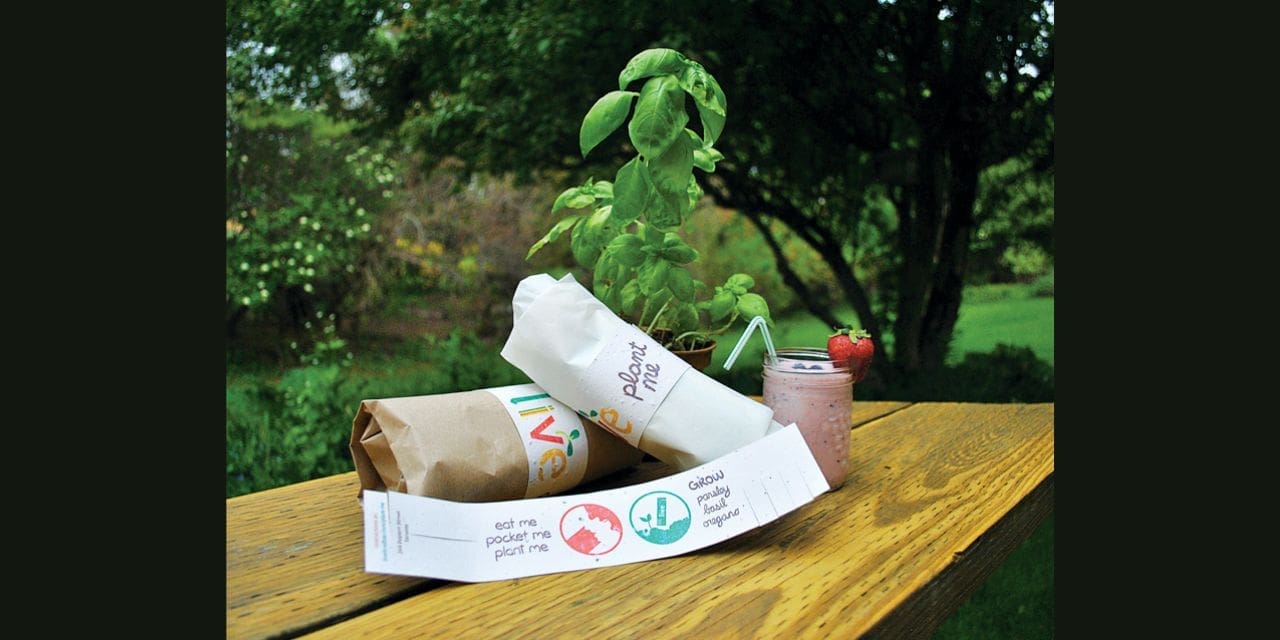The plantable packaging market size is projected to be valued at US$ 120.0 million in 2023 and is expected to rise to US$ 340.0 million by 2033. The sales of plantable packaging are expected to grow at a significant CAGR of 11.0% during the forecast period.
Plantable packaging is an emerging market that has the potential to grow swiftly in the coming years due to its sustainable and eco-friendly nature. Here are some market dynamics stakeholders should concern before entering the market:
Growing need for sustainable packaging: As people become more aware of the environmental impact of plastic waste, there is a greater demand for sustainable packaging alternatives. Plantable packaging, created from natural and biodegradable materials, is an excellent choice for ecologically aware consumers.
Regulatory push for sustainable packaging: Governments all around the world are putting measures in place to decrease plastic waste and encourage sustainable packaging. This allows plantable packaging producers to capitalize on the growing demand for sustainable alternatives.
Unique Product Profile: Plantable packaging provides a unique value proposition to clients because it not only functions as a packaging material but also doubles as a way to produce plants. This unique technology can help businesses stand out in a congested market and attract customers who want something different.
Limited market size: While the plantable packaging market is expanding, it remains modest in comparison to other packaging materials. In the short term, this may limit the potential for high returns on investment.
High Cost and Scalability: Plantable packaging is currently more expensive than standard packaging materials, making it less competitive in price-sensitive applications. Furthermore, scalability might be a challenging aspect for businesses that rely on natural materials as they can be altered by weather or other external factors.
In conclusion, investment in the plantable packaging industry can provide significant opportunities for growth and sustainability. However, comprehensive study and due diligence are required to examine the product’s market potential, competitive landscape, and environmental impact, among other things. Furthermore, the ability to customize and innovate in plantable packaging makes it an intriguing route for growth and development in the packaging sector.
Plantable Packaging Manufacturers Can Expand Consumer-base in a Variety of Ways
Highlighting functionality: Plantable packaging is not just a sustainable solution, but it also has other advantages such as biodegradability, durability, and moisture resistance. Manufacturers may demonstrate to consumers the functional benefits of their products, emphasizing that plantable packaging is not just ecologically benign but also useful.
Providing informative content: Many consumers may be unaware of the benefits of plantable packaging. To raise awareness about the benefits of plantable packaging and how it works, manufacturers can provide educational content such as films, blog entries, or social media content.
Customization: Plantable packaging can be customized with various forms, colors, and designs, making it an appealing alternative for firms trying to stand out. Manufacturers can provide brands with customization options to help them differentiate their products in the market.
Collaboration with eco-conscious brands: Working with brands that are committed to sustainability can help producers reach a larger audience of consumers who are more likely to be interested in plantable packaging. Manufacturers may utilize each other’s audiences and build a stronger message about sustainability by cooperating with like-minded brands
Regional Analysis of the Plantable Packaging Market
North America is a Prominent Region in the Plantable Packaging Industry, Accounting for a Sizable Portion of 26.3% Share of the Global Industry.
Several efforts and programs have been implemented in the region to encourage the usage and adoption of plantable packaging solutions. The Sustainable Packaging Coalition (SPC), a membership-based collaborative that strives to create a more sustainable packaging sector, is one such endeavor. The SPC has created a set of sustainable packaging guidelines, which include the use of plant-based materials and compostable packaging. They also provide companies with tools and resources to help them implement sustainable packaging solutions, such as plantable packaging.
Major North American retailers, such as Walmart and Target, have also established sustainability goals for their packaging and are actively exploring eco-friendly alternatives, such as plantable packaging options.
The European Union (EU) has Set Ambitious Targets to Eliminate Plastic Waste and Promote the Use of Environmentally Friendly Packaging Materials.
Europe has influenced the plantable packaging market in 2022 capturing a strong share of 32.0%. The EU Circular Economy Action Plan, which aims to make the European economy more sustainable and circular, is one method Europe promotes plantable packaging options. Furthermore, several European countries have put in place legislation and measures to limit plastic waste and encourage sustainable packaging options. France, for example, has prohibited single-use plastic bags and wants to phase out other single-use plastics by 2040. Italy has also banned single-use plastics such as plates, silverware, and straws. Furthermore, some European companies specialize in plantable packaging solutions and are setting the standard for innovation and sustainability. GreenBottle, a UK-based startup, has developed a plantable packaging solution for milk and other liquids.
As part of its Efforts towards Sustainable Development, India is Actively Promoting Plantable Packaging Options.
India is showing all the signs to be a lucrative market through a progressive growth trajectory of 7.9% during the analysis period. The government has implemented several initiatives and legislation to encourage the use of environmentally friendly packaging materials.
The Ministry of Environment, Forests, and Climate Change started the ‘Green Good Deeds’ campaign in 2018, to encourage people to use eco-friendly practices and products, such as plantable packaging. Aside from government initiatives, some entrepreneurs and businesses in India are advocating the use of plantable packaging solutions. For example, Sow and Grow, a Mumbai-based firm, has created plantable packaging composed of recycled paper and seeds that can be planted and grown into various herbs and vegetables.

